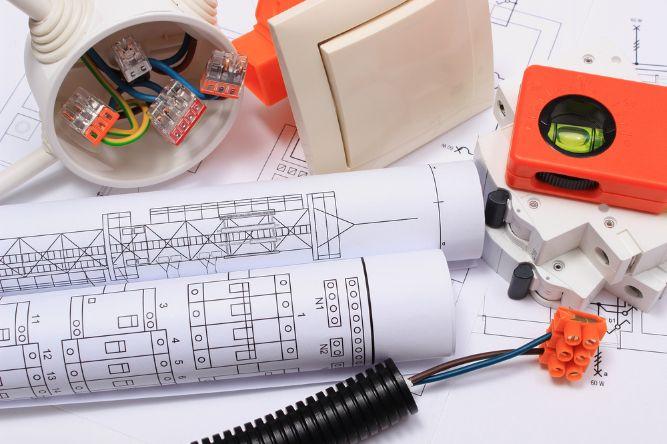
Residential and commercial electrical systems are more different than you might expect at first glance. Commercial systems tend to be larger, sure, but they’re also more complex; they’re often wired differently than residential systems.
There’s a lot of information to cover, so we’re going to get down to brass tacks in just a moment. Before we do, though, it’s important to note that some “commercial” businesses are wired with residential wiring—it depends on the building that they’re in and the kinds of services they offer.
Generally, commercial power is reserved for office buildings, large retail stores and malls, and even large residential buildings like apartment buildings.
With that in mind, let’s dive into the differences between residential and commercial electrical systems:
Single-Phase Vs. Three-Phase Power
In North America, residential and small commercial buildings are powered by what are known as single-phase systems—more specifically, split-phase or single-phase three-wire systems. That’s a complicated way of saying that our homes are powered by two hot wires and one neutral wire.
Commercial businesses, on the other hand, are powered by three-phase systems featuring three hot wires and a single neutral wire. This allows these businesses to power large HVAC systems and other powerful motors, all while still enabling them to run 120 V electricity to power computers and other small appliances.
Voltage Levels & Electrical Load
Most residential properties use 120 V for most of their outlets and 240 V for larger outlets. Commercial buildings, on the other hand, will use much higher voltage levels—up to 600 V! These high voltage levels are used to power large motors and some industrial machines.
As you can imagine, the load of commercial buildings is also typically much higher than that of residential systems. A typical residential electrical system will be a 100 amp to 200 amp service—enough for modern electrical needs.
Commercial power supplies, on the other hand, can range from 200 amp to 1000 amp services.
This means that while commercial and residential electricians both have to deal with a range of different services, residential electricians typically only need to worry about 120 V-240 V outlets and 100-200 amp systems. Commercial electricians work on a much broader range of different electrical systems.
Safety Requirements & Energy Management
Both residential and commercial electricians must meet strict safety requirements when working on electrical services. The safety requirements and emergency systems involved with both of these systems can be, however, quite different.
Generally, commercial properties (especially large commercial buildings) have much more stringent safety requirements than residential electrical systems. This makes sense—there are more people in a commercial building, and there’s more power running through these systems.
As such, a commercial building may have emergency backup power systems and complex fire suppression systems.
In a similar vein, commercial contractors will typically install power management systems to help business owners monitor and reduce their energy costs. The cost of installing these systems is typically more affordable and provides more benefits to business owners than it does to homeowners.
Different Electricians for Different Buildings
Both residential and commercial electricians have highly specialized jobs—it’s important to hire a commercial electrician for a commercial building and a residential electrician for a residential building.
We hope this article has helped you understand why—truly, we’re just scratching the surface.
Whether you need commercial electricians or residential electricians, we’re here for you. At Powertec Electric, we have electricians in Winnipeg who are highly trained and specialized to take on whatever task you have for them. Call us today.

